
Atlas F1 Contributing Writer
The French Grand Prix has come a long way from its beginnings back at the end of the XIX century, when the first chapters of the long and epic history of motor racing were written. Journalist and historian Doug Nye looks back at the history of the French race more than a hundred years after its birth
Permit me to paint in some of the background. The world's first significant - and one or two extremely insignificant - races to be contested by the new-fangled motor car were held in France between 1887 and 1895. The first massed-entry competitive event was the Paris-Rouen Trial of 1895 and it also provided the spark for an association of industry figures and high-born aristocratic enthusiasts to form the formidably prestigious ACF, and to adopt even more formidably prestigious headquarters in the Place de la Concorde, Paris.
This organisation then presided at that time over the largest national motor industry in any country of the world. It was headed by gentlemen with formidably competitive tastes and sporting interests, and they began to organise - and to help others to organise - the developing series of motor races which industry rapidly exploited as a means to promoting and selling their latest wares. 'Win on Sunday, Sell on Monday' might have been an American advertising slogan, but as a philosophy it was well understood - and practised to the extreme - in fin de siecle France.
The first international series of motor races was the Gordon Bennett Cup, promoted by the exiled American newspaper magnate James Gordon Bennett from July 1899. His Cup was to be contested not merely between individual drivers or cars, but between painstakingly selected national teams of only three cars from each of the world's interested manufacturing countries. This became the Gordon Bennett Cup competition's fatal weakness. If France had a motor industry that was ten times the size of Great Britain's, twelve times the size of Germany's and fifteen times the size of the USA's, how could it be fair for their national team to be confined to merely three contestants, just like all these pipsqueak rival nations?
The Gordon Bennett rumbled and thundered and clattered and clanked through its brief life until 1905, but already by 1903 the French had been toying with organising an alternative international annual event of their own - to be entitled the 'Grand Prix' - the 'Great Prize'. In this event the ACF's vision was to provide a motor race open to all comers, from every interested nation, and every manufacturing company thereof. Should French entrants out-number the rest by three-to-one, so what? It would provide a fair depiction of relative strength, there was a great chance of a home win for the always xenophobic French to relish - and to brandish - and, above all, what wonderful sport this would be.
And so it was that the Grand Prix de l'ACF - the 'French Grand Prix' - was born initially out of French pride, but mainly out of frustration with the stifling Gordon Bennett Cup regulations which had hampered rather than truly promoted major-league international competition through those pioneering years.
The first Grand Prix - the event which introduced the purebred line of motor racing which has survived to this day as the modern Formula One series - was run on June 26-27, 1906, over a monster 64.12-mile public road circuit laid out just east of Le Mans, France. Six laps of this course had to be completed on each of the two days. Thirteen individual marques were represented - ten of them French - and Louis Renault's Hungarian-born former riding mechanic, Ferenc Szisz, won handsomely behind the wheel of one of his Guv'nor's specially-built Renaults - having averaged over 62mph for more than 12 hours.
French pride was satisfied - at both national and industrial levels - and the new 'Grand Prix' was hailed as having been an immense success, and as an event that had been infinitely superior to any motor race ever held before that date. In 1907 the event was repeated, but in shortened, more digestible form. It was run on just one day, over a new 47.84-mile public road circuit selected just outside the Channel port of Dieppe. The Grand Prix 'Formula' - or set of technical regulations and requirements - was chosen individually for each year. The 1907 'Formula' differed from that of 1906, and that of 1908 would be different again. Each of these events was an annual one-off, and the sportingly inclined motor manufacturers of Europe, Great Britain and the USA hung eagerly upon publication of the ACF's regulations. It was the motoring equivalent of the Open Championship - absolutely a golfing one-off devised and held in Britain - or of the Wimbledon Championship - another one-off, this time for woolly-ball, played in England. There was no other event of similar magnitude, much less a series offering qualifying points which counted towards an annual Championship.
So this is what made the GP de l'ACF so special to an entire generation of novitiate motor racing aficionados. But all was not well en France through 1907-08. For one thing, every French manufacturer's finest was thrashed in the 1907 Grand Prix by Fiat, of Italy. For another, every French manufacturer's finest was then thrashed again in the 1908 Grand Prix by Mercedes and Benz, of Germany. This wasn't going to plan at all. What's worse is that a worldwide trade recession hammered profits and sent share prices plummeting. Against such restraints, and humiliating embarrassment, the French industry's finest agreed between themselves that Grand Prix racing was too expensive - and they opted out. Does any of this sound threateningly familiar right now?
This took place, back at Dieppe, in 1912. This time a two-day 956-mile race was organised, and it saw the former Voiturette manufacturer, Peugeot, float like cream to the top of the coffee, and defeat the traditional giant-engine, chain-drive might of Fiat. The victorious works driver was Georges Boillot who overnight became a great sporting hero of all France. His Peugeot emphasised the potential of twin overhead camshaft, four valves per cylinder, hemispherical combustion chamber engine design, and it had shaft-drive too. Here was a truly modern motor car, proven in Grand Prix competition.
In 1913 the fifth Grand Prix de l'ACF was run at Amiens, and won again by Boillot and an even more sophisticated Peugeot. But for 1914 Paul Daimler in Stuttgart organised another military-style Germanic assault upon the French establishment, and at Lyons-Givors that year his works Mercedes GP cars barked home 1st, 2nd and 3rd - defeating the broken Peugeot of Georges Boillot after an epic, almost race-long battle. Within weeks - for other reasons - Germany and France were at war. Engines based on the victorious Mercedes GP design technology would excel in the air above the Western Front, and Georges Boillot would be one of the millions of World War I's fallen.
Nothing if not resilient, the ACF organised their first post-WWI Grand Prix as early as 1921. It was won not by Ernest Ballot's new generation of French-built GP cars - as the Gallic scriptwriters had assumed - but by Jimmy Murphy's Indianapolis-bred Duesenberg visiting from America. Today many enthusiasts recall with glee how Cooper and Lotus travelled to Indy in 1963-65 to overturn the American establishment in racing. Well, way back in 1921 the Americans had carried out a similar coup in reverse to win the 'French Grand Prix'. A crucial difference, of course, is that they did so using the technology first previously exported to American racing by Peugeot and Ballot around the First World War.
Public road circuits had been used, merely specially prepared and closed for the race period, at Strasbourg, Tours, and Lyon-Givors before the artificial Montlhery Autodrome course - which combined both banked speedbowl and a wonderful road circuit - was employed in 1925. But French industry - as well as national politics - were in crisis during that period. In 1926 the 'French Grand Prix' was run at Miramas - an extraordinarily dull and unimaginative Autodrome near Marseilles - and the only starters were three Bugattis. Guess what won? Delage won again back at Montlhery in 1927 but by 1928 the deepest, darkest recession in history was taking insidious root. Sports car races were accorded the Grand Prix title in 1928 and 1930 at Comminges and Pau. A fuel consumption Formula applied at Le Mans in 1929, while back at Montlhery in 1931 Grand Prix cars contested a GP of regulation ten-hours duration. In 1932 at Reims in the Champagne country of northern France the GP was a five-hour event, won by Nuvolari in a factory Alfa Romeo Tipo B Monoposto - the first pioneering full-size GP car to seat its driver alone in a slender body centred upon the car's longitudinal axis. Come 1933, at Montlhery, and the rotund Giuseppe Campari won for Maserati in a lowline-bodied offset-seat GP car.
By this time the Great Depression which had seen millions unemployed worldwide and numerous of the great motor manufacturing marques crumble into dust, had just about blown through. A new beginning came from Hitler's New Germany. Backed by the Nazi Government, a brand-new generation of high-tech Grand Prix cars emerged from Mercedes-Benz and Auto Union. Although they hiccupped when first run against the establishment Alfa Romeos in the 'French Grand Prix' of 1934, the silver-liveried German juggernaut assumed domination in 1935. Without a single worthwhile GP car to field against the humbling Hun, the French responded by turning a blind eye to the Grand Prix class, and ran its national Grand Prix race instead for sports cars - at Montlhery in 1936 and 1937. But at Reims in 1938-39 they returned to face the music which Mercedes-Benz and Auto Union's finest happily provided…
For the second time in a generation Germany and France resorted to war 1939-45. The 'French Grand Prix' was revived promptly in 1947, on a suburban street circuit in Lyons in order to ensure easy public access for spectators starved of individual transport, fuel and tyres. Louis Chiron won in a Talbot. In 1948 at Reims the revived Alfa Corse team from Italy reigned supreme, Jean-Pierre Wimille being the French driver of the victorious Italian car, with two Italian teammates shepherding him home. While the 1949 GP de l'ACF was run for sports cars, something of a rogue 'Grand Prix de France' was freelance organised at Reims.
During 1952-53, World Championship status was conferred by international Formula 2 races held at all the established Grande Epreuve venues save Monaco. The French race was held, capriciously, at Rouen-les-Essarts where Ascari (Ferrari) emerged supreme, while back at Reims in '53 Englishman Mike Hawthorn held off Fangio to give Ferrari yet another victory, over Maserati. At Reims again in 1954, Fangio won upon the shattering debut of the brand-new Mercedes-Benz W196 Stromlinienwagen - a streamlined era was flashing through.
After the Le Mans disaster of 1955 there was no French GP, but in 1956 it was revived at Reims - and another English boy won - Peter Collins in the works Lancia-Ferrari D50A.
Back to Rouen for 1957 - Fangio supreme, and sublime, in his glorious Maserati 250F 'Lightweight'. Reims '58 - Mike Hawthorn winning the French GP for the second time in his career, in the latest Ferrari Dino 246 V6. Reims '59 - the smooth-driving artistic Tony Brooks victorious for Ferrari in the latest Fantuzzi-bodied iteration of the Dino 246. Reims '60 - Jack Brabham hitting 190mph on the Soissons Straight to score the first rear-engined Formula One victory there in his 'Lowline' Cooper-Climax T53.
That was the last year of what had been since 1954 the 2 ˝-litre maximum capacity Formula One. Mere 1˝-litre regulations replace the old class for 1961-65 - GPs run at Reims, Rouen and Clermont-Ferrand - every one a closed public road circuit. Winners were debutant Giancarlo Baghetti in an effectively privately-entered 'Sharknose' Ferrari, Dan Gurney in the works flat-8 Porsche 804, Jimmy Clark in the sublime Lotus-Climax 25, Gurney again in a Brabham-Climax and then JC once more in the updated monocoque Lotus.
New 3-litre Formula One regulations prevailed from 1966 - Jack Brabham at Reims scoring the first-ever victory by a ranking driver in a car bearing his own name, the Repco-Brabham BT19. In 1967 the old ACF oligarchy was beginning to rock and crumble. The rival FFSA run by one Jean-Marie Balestre was becoming ever more active and subversive. The French Grand Prix was becoming a buzz word, the Grand Prix de l'ACF was under attack by woodworm. For 1967 the race was run on the new Bugatti circuit laid out through the old car-parking areas at Le Mans, and 'Black Jack' won again. The FFSA organised the Grand Prix at Rouen in 1968. It poured with rain, Jo Schlesser died in the fiery demise of the prototype air-cooled V8 Honda and Jackie Ickx triumphed for Ferrari on Firestone rain tyres…
And so by 1970 we were well established in the modern era of wings and logos, of advertising slogans and personal trainers and dieticians. The great French race has since been run at Ricard-Castellet down on the Mediterranean coast, at Clermont one last time when flying trackside stones robbed one luckless driver of his sight in one eye, and at Dijon-Prenois where Renault scored their first GP victory since 1906 and Rene Arnoux's second-string Renault turbo fought tyre-wall to tyre-wall against Gilles Villeneuve's Ferrari for 2nd place. And so to Magny-Cours - developed from a tinhorn little rural circuit into the modern 'world-class facility' with French Government and EU funding, first used in 1991 and now considered to be the natural home of 'The French Grand Prix'.
We have come a long, long way indeed from that 64-mile triangle of public roads to the east of Le Mans, to be lapped six times each day, for two days, some 96 years ago. Let's just pray that this time it's as good a race as that one appears to have been. After all, Silverstone showed what's possible.
Once upon a time the title 'French Grand Prix' really made enthusiasts wake up and pay attention. It was a loose piece of Anglicisation for the great annual classic race was, strictly speaking, the 'Grand Prix de l'Automobile Club de France', often abbreviated to the 'GP de l'ACF'. OK - so why did this make it so important, so special?
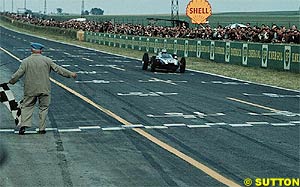 The Place de la Concorde committees first outlined a Grand Prix race meting for 1904, and the first was finally run in 1906 - after the ACF had announced that it would be concentrating upon this event to the total exclusion of the now defunct Gordon Bennett event.
The Place de la Concorde committees first outlined a Grand Prix race meting for 1904, and the first was finally run in 1906 - after the ACF had announced that it would be concentrating upon this event to the total exclusion of the now defunct Gordon Bennett event.
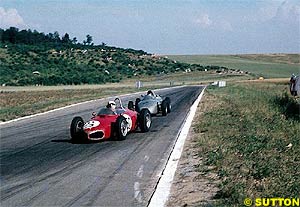 The ACF organised no Grand Prix race in 1909-1910, and for 1911 a rather minor and pale imitation was run half-heartedly by another organisation at Le Mans - a race which would be referred to contemptuously as the 'Grand Prix des Vieux Tacots' - in effect 'The Old Crocks Race'. But as the economic climate improved, great manufacturers who had been eyeing one another suspiciously - and who had been dismayed by the growing capabilities of the light-car 'Voiturette' manufacturers who had gone on happily racing between themselves regardless of what 'the big boys' had agreed not to do - put their muscle behind a revival of the Grand Prix.
The ACF organised no Grand Prix race in 1909-1910, and for 1911 a rather minor and pale imitation was run half-heartedly by another organisation at Le Mans - a race which would be referred to contemptuously as the 'Grand Prix des Vieux Tacots' - in effect 'The Old Crocks Race'. But as the economic climate improved, great manufacturers who had been eyeing one another suspiciously - and who had been dismayed by the growing capabilities of the light-car 'Voiturette' manufacturers who had gone on happily racing between themselves regardless of what 'the big boys' had agreed not to do - put their muscle behind a revival of the Grand Prix.
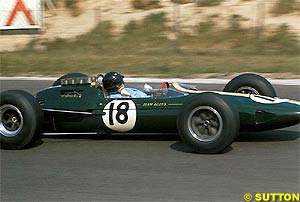 Through the early 1920s, other national Grand Prix races began to join the French event in a growing annual international calendar. The Italian Grand Prix was instituted, then the Belgian, and the German and even - briefly - an 'English' Grand Prix at Brooklands. From 1922 to 1925 the great French race was run for 2-litre capacity cars, falling to Fiat, Sunbeam, Alfa Romeo, and Delage.
Through the early 1920s, other national Grand Prix races began to join the French event in a growing annual international calendar. The Italian Grand Prix was instituted, then the Belgian, and the German and even - briefly - an 'English' Grand Prix at Brooklands. From 1922 to 1925 the great French race was run for 2-litre capacity cars, falling to Fiat, Sunbeam, Alfa Romeo, and Delage.
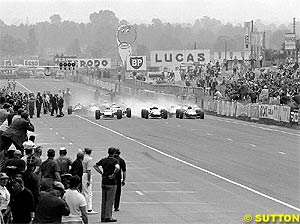 By this time the postwar international governing body, the FIA, was getting its act together. What had been pre-war the annual Grandes Epreuves - the 'great tests' GPs, such as the French, Swiss, German, Belgian and Italian - were mixed-in with the new-fangled British event to qualify for the freshly launched FIA Formula One Drivers' Championship. The Grand Prix de l'ACF was the senior event of the motor sporting year, and it was duly won by Fangio, for Alfa Romeo. At Reims again in 1951 Fangio took over veteran teammate Luigi Fagioli's Alfetta, to win again for the Portello team.
By this time the postwar international governing body, the FIA, was getting its act together. What had been pre-war the annual Grandes Epreuves - the 'great tests' GPs, such as the French, Swiss, German, Belgian and Italian - were mixed-in with the new-fangled British event to qualify for the freshly launched FIA Formula One Drivers' Championship. The Grand Prix de l'ACF was the senior event of the motor sporting year, and it was duly won by Fangio, for Alfa Romeo. At Reims again in 1951 Fangio took over veteran teammate Luigi Fagioli's Alfetta, to win again for the Portello team.
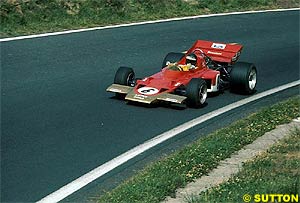 Back to Clermont-Ferrand's Charade circuit in the Auvergne for 1969 - victory fell to Jackie Stewart's French-blue Matra-Cosworth MS80. Honour had in many ways returned to France, and les bleues were winning again…with a little help from les rosbifs.
Back to Clermont-Ferrand's Charade circuit in the Auvergne for 1969 - victory fell to Jackie Stewart's French-blue Matra-Cosworth MS80. Honour had in many ways returned to France, and les bleues were winning again…with a little help from les rosbifs.
Please Contact Us for permission to republish this or any other material from Atlas F1.
|
Volume 8, Issue 29
Atlas F1 Exclusive
The Twelve Million Dollar Man
Interview with Ross Brawn
A Weekend with the Dennises
Articles
Giancarlo Fisichella: Through the Visor
Jo Ramirez: a Racing Man
French GP Preview
The French GP Preview
Local History: French GP
France Facts, Stats and Memoirs
Columns
The French & German GP Quiz
Bookworm Critique
Elsewhere in Racing
The Grapevine
> Homepage |